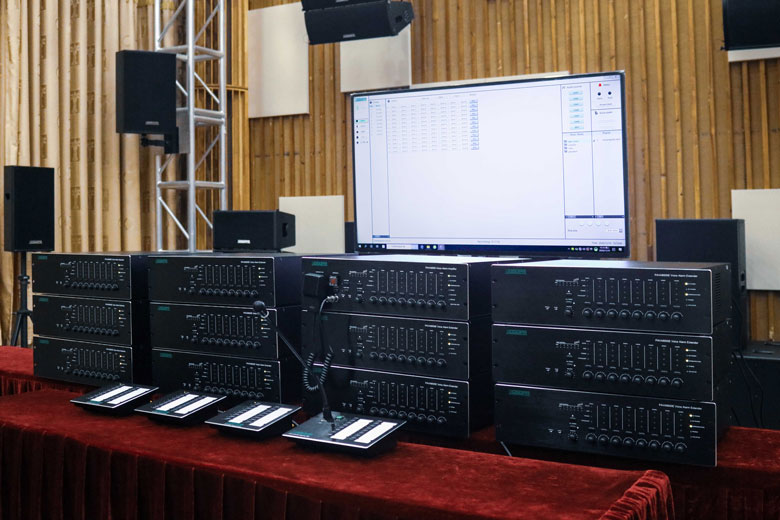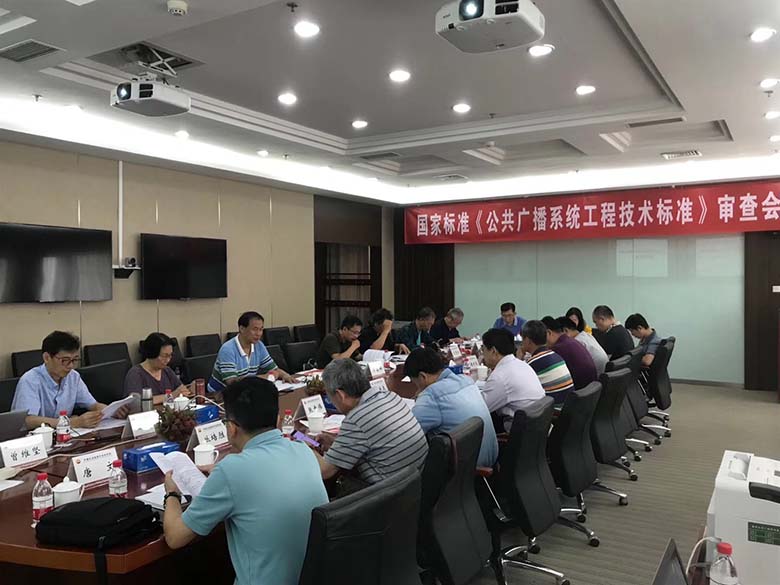
With the rapid development of communication technology, computer technology and multimedia technology, especially with the gradual practical application of the broadband integrated service digital network B-ISDN with high-speed and effective multimedia communication capabilities, distributed multi-user communication conference systems have become more and more increasingly important.
These distributed multimedia multi-user communication conference systems all require the use of computer systems to comprehensively control a series of processes such as collection, storage, communication, operation and presentation of multimedia information. One of the key issues is how to achieve synchronization among various media objects in a distributed multimedia communication system.

Multimedia distributed audio and video systems include audio, video, animation, graphics, images, text, data and other types of media objects. These media objects usually have strict time constraints, and the purpose of synchronization is to maintain the inherent time constraints between media objects when presenting multimedia information to users.
Synchronization is a time-based concept, which refers to the temporal relationship between various media objects in a multimedia system. It is called synchronization problem, which usually includes intra-stream synchronization and inter-stream synchronization. Intra-stream synchronization refers to the temporal relationships that exist between individual media units within a single medium over a single connection. Inter-stream synchronization refers to the temporal relationship that exists between various media units across multiple connections.
Distributed group communication technology is a hot research topic in the field of communication. It refers to a group of users located in different places to use the network connection between each other to communicate and complete the common work.

.jpg)
Distributed desktop multimedia conference is a typical group communication, requiring each user to keep connected with each other, each user is both a sender and a receiver. Group synchronization is a unique synchronization problem in distributed multimedia group communication. The essence of group synchronization is to maintain mutual synchronization between users in the group. Each user in the group collects media units at the same time, and then sends them to other users in the group in real time. After the user receives each user media unit at the same time, it will be synthesized and played at the same time, without being affected by factors such as region and transmission time.
Since synchronization technology is one of the key technologies of distributed multimedia communication, many researchers have done extensive research on multimedia synchronization technology from various aspects, and some progress has been made. Through a series of experiments, people's tolerance to various levels of synchronization quality is studied, especially people's tolerance to the maximum asynchrony between related media streams, the synchronization requirements of the user interface are proposed, and a clear quality of service (QOS) expression is used. this demand. In order to be able to describe the synchronization relationship between various media objects in a multimedia system explicitly, an advanced multimedia synchronization specification method must be used.
At present, the main multimedia synchronization specification methods are: interval-based synchronization specification method, extended finite state machine-based synchronization specification method, CSP-based synchronization specification method and PETRI-NET-based synchronization specification method.
.jpg)
Among them, the synchronization specification method based on PETRL-NET is more perfect and flexible after many expansions. In a workstation environment, when multimedia information is presented to users, its synchronization quality is often affected by factors such as system load. In-depth research on the characteristics of UNIX operating system is carried out, the influence of time-sharing and multi-process operating system on multimedia performance is clarified, and the control strategy based on priority number is adopted, which it overcomes the deficiencies and defects of the UNIX operating system environment for real-time multimedia communication to a certain extent.
The group synchronization in the multimedia conference system is actually to keep each user in the group synchronized with each other. In an ideal situation, each user obtains live media information at the same time, and after mutual transmission, it is synthesized and broadcasted at each user terminal at the same time. If the clocks of each user terminal in the system can be kept exactly the same, the group synchronization problem is relatively simple, but under the current situation, it is difficult to keep the accurate and unified user clocks of the whole network.
 【DSPPA Demo】PAVA8000 EN54 Voice Evacuation SystemNovember 12, 2020Abstract: DSPPA PAVA8000 EN54 Voice Evacuation SystemToday, we are gonna show you a demo about our PAVA8000 EN54 Voice Evacuation System.PAVA8000EN54 Voice Evacuation System can not only support manua...view
【DSPPA Demo】PAVA8000 EN54 Voice Evacuation SystemNovember 12, 2020Abstract: DSPPA PAVA8000 EN54 Voice Evacuation SystemToday, we are gonna show you a demo about our PAVA8000 EN54 Voice Evacuation System.PAVA8000EN54 Voice Evacuation System can not only support manua...view The National Standard Approval Meeting held in BeijingJuly 19, 2019The National Standard Approval Meeting held in BeijingThe approval meeting of the National StandardTechnical standard of public address system engineeringis held in Beijing on July 16, 2019. Xue Chang...view
The National Standard Approval Meeting held in BeijingJuly 19, 2019The National Standard Approval Meeting held in BeijingThe approval meeting of the National StandardTechnical standard of public address system engineeringis held in Beijing on July 16, 2019. Xue Chang...view